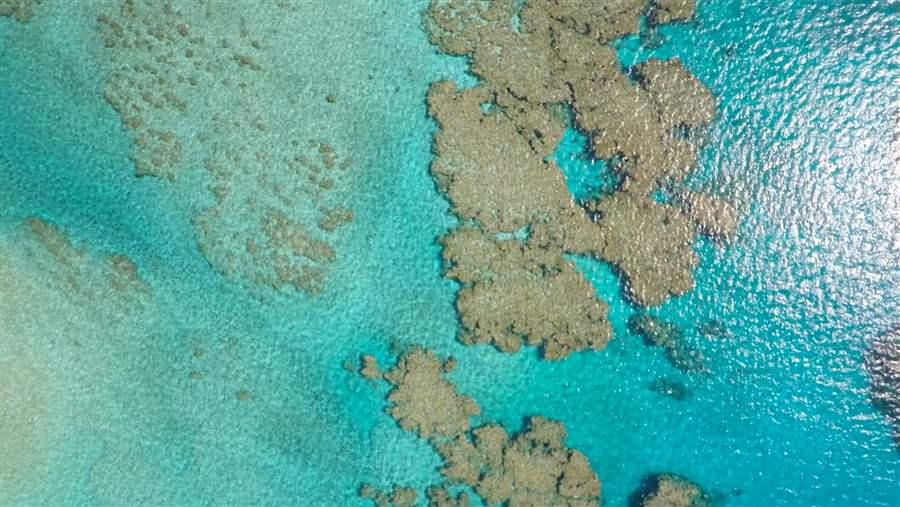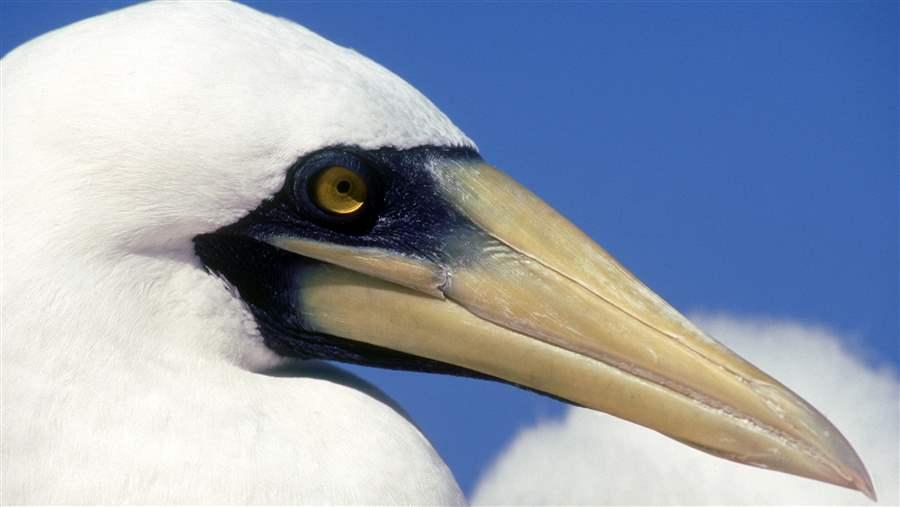Australian Government Plans Massive Rollback of Marine Protections
Move would ignore science on threatened species and ocean health

A mosaic of coral reef formations, seen from the air, on Holmes Reef in the Coral Sea, approximately 240km (150 miles) east of the Australian city of Cairns.
© Bluebottle Films / The Pew Charitable TrustsThe Australian Government has released plans to reduce vital protections in the nation’s network of marine parks and sanctuaries, which is the largest in the world. At a time when other countries are increasing ocean protection, Australia is planning to remove sanctuaries that provide habitat for a vast array of marine life and improve ocean health in a variety of ways.
These proposed changes would allow for destructive fishing practices in 38 of the country’s 44 federal marine sanctuaries. In the Coral Sea alone, the plans would remove more than half of the marine sanctuaries, which would leave only seven of 37 reefs protected in an area known as the Serengeti of the ocean.

A shark patrols Wreck Reef in Australia’s Coral Sea, where sanctuary-level protections could be cut by more than half under a government draft plan.
© Xanthe Rivett CampaignThe Coral Sea’s remarkable marine environments are nurseries for many giants of the sea, including multiple species of whales, sharks, and marlin. The sanctuaries also help safeguard imperiled species such as sea turtles. Like reserves elsewhere the world, Australia’s protected waters improve surrounding fisheries by giving commercially critical species such as swordfish places to feed and breed without the immediate threat of fishing. Numerous major studies show such benefits, including one published in 2008 in the journal Marine Ecology Progress Series and another published in 2005 in Philosophical Transactions B. Marine reserves also serve as sources of livelihood for communities engaged in marine tourism.
Removing these protections would run counter to the Australian Government’s 2013 commitment to make conservation decisions based on scientific evidence. Officials still have time to base their decision on the science showing that marine sanctuaries improve fish populations.
An Australian Marine Conservation Society study released in September revealed a ten-fold increase in bycatch of protected species, including turtles, whales, dolphins, and seabirds, in Australia’s east coast tuna longline fishery, which extends into the Coral Sea. The spike in bycatch demonstrates the need to maintain marine sanctuaries to protect these species in the region.
More than 1,400 of the world’s leading marine researchers oppose the plans to cut marine reserves.

The Coral Sea is an internationally significant region for populations of breeding seabirds.
© Tammy Peluso/Getty ImagesAt a time when the world’s ocean is withering due to numerous human-caused threats, it is critical that the Australian Government maintain strong marine protections across large areas and make conservation decisions based on science. The country cannot afford to roll back the decades of progress it has made in protecting our oceans.
Michelle Grady leads The Pew Charitable Trusts’ marine work in Australia, collaborating with conservation, science, and community partners to safeguard unique marine life and ecosystems.






